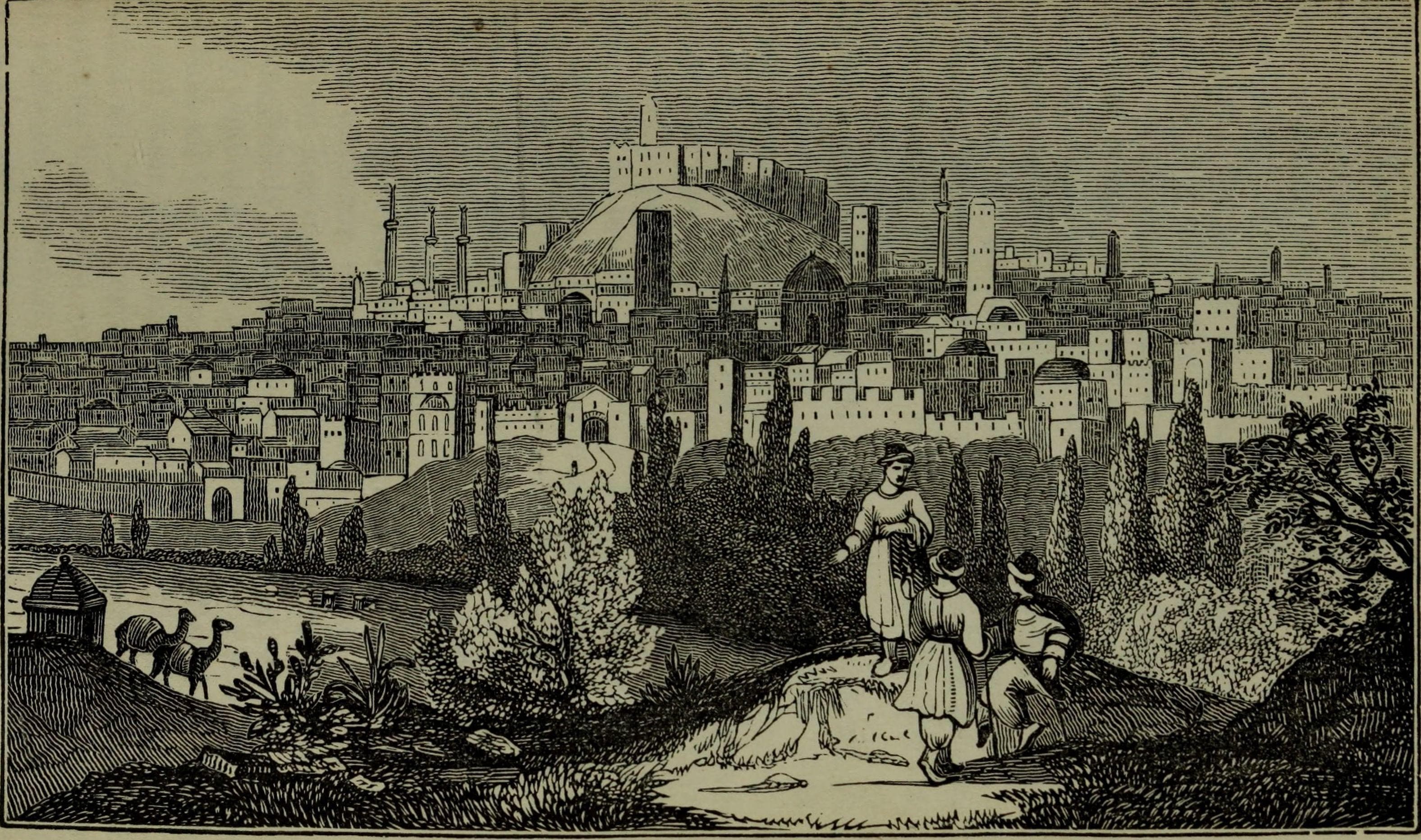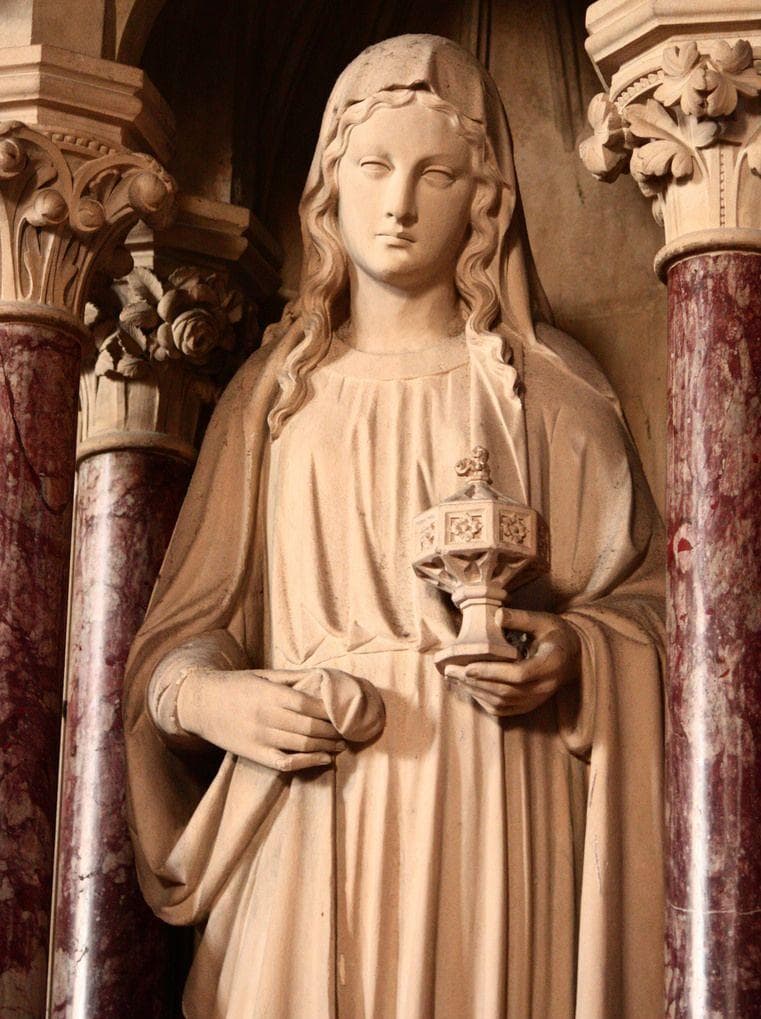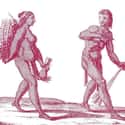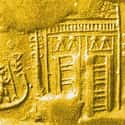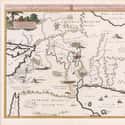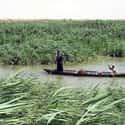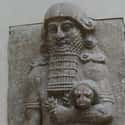-
(#4) The First People To Gather Seeds And Start Farming Were Women
One way to read Genesis is as a male allegory based on the experiences of the earliest human societies when men brought meat home from the hunt and women were responsible for gathering plant food. Everything went awry 10,000 years ago when women started gathering seeds and developed the practice of intentional food production.
Women saw the benefit of bringing the food to them instead of searching for it, and began to stockpile grains for periods of drought when food was scarce. This way, with more available throughout the seasons, population increased. For the first time, people could stay in one place by producing all the grains and meat they needed.
This transition meant that men, as the hunters, needed job retraining. This shift is supported by numerous myths in cultures ranging from Native American to African to Greek where harvest goddesses must teach men how to grow food.
-
(#2) It Appears The Ubaidians Were The First To Settle The Persian Gulf
In the past few years, the remains of 60 7,500 year-old settlements from the Ubaid Period have turned up around the edge of the Persian Gulf. These sites hold the ruins of well-built, permanent stone houses, evidence of long-distance trade networks, elaborately decorated pottery, domesticated animals, and wood from one of the oldest boats in the world.
What's strange about these advanced settlements is that unlike nearby sites in Yemen and Oman, archeologists haven't found any stone tools that identify preceding Paleolithic settlements in the area. It seems unlikely that the Ubaidians, who were more technologically advanced than people in the Nile River Valley at that time, appeared out of nowhere.
-
(#1) Four Ancient Rivers Led Scholars to Eden's Geographical Location
According to the Genesis, the Garden of Eden was located at the head of one major river that then divided into four rivers to water the garden: the Pishon, Gihon, Tigris, and Euphrates. Because Eden was described at the "head" of this biblical river system, many scholars placed Eden in the mountains of Turkey where the Tigris and Euphrates originate. However, in ancient Hebrew, "head" didn't mean the beginning of a river, but where it intersected with other bodies of water - this would imply that the heads of the four rivers were all in the Persian Gulf.
The Tigris and Euphrates are easy to identify because they still exist, but there's much debate about the biblical Gihon and Pishon rivers. Many scholars have argued that the Gihon was the Nile and the Pishon the Ganges, but at no point in geological history have these four major rivers intersected. A more likely scenario is that the Gihon River corresponds with the Karun River in Iran, and the Pishon River with the Wadi Batin river system (now dry) that once drained from the fertile central area of the Arabian Peninsula into the Persian Gulf. These four ancient rivers place Eden at the top of the Persian Gulf in the area of the Mesopotamian Marshes.
-
(#11) The Mesopotamian Marshes Were A Hotspot At The Beginning Of Civilization
Dilmun may have all the stories to prove it was Eden, but the Mesopotamian Marshes have all the geological and archeological evidence. The marshes covered 6,000 square miles only a few hundred years ago, and even vaster in ancient times, providing a rich bounty for hunter-gatherers. The first Ubaid farming villages were established in the marshes by 6200 BCE and by 3800 BCE, the Sumerian city of Ur, famous for its canals, was established at the edge of the marshes.
Archaeological excavations show that Ur led Mesopotamia in terms of early urban development, its wealthy citizens enjoying a level of comfort not seen at that time in surrounding cities. Ur reached its peak around 2047-1750 BCE when it built its great ziggurat and high city walls, but by 450 CE it had been pushed north off the shores of the marshes by a buildup of river silt and was abandoned.
-
(#8) There Are Similarities Between Genesis's Adam And The First Man In Sumerian Mythology
In Sumerian legend, the first man was created out of clay and blood as a servant for the gods because they were tired of working the land and wanted someone to do it for them. Man is portrayed in Sumerian art as working in their gardens in a state of nakedness like Adam.
In the tale of Adapa and the South Wind, the first man, Adapa, is taken to the place of the gods when he breaks the South Wind's arm when it overturns his boat on the Persian Gulf. While there, it's discovered that Adapa has knowledge of the secret workings of heaven and earth, good and evil, right and wrong. Because he already has this higher knowledge, the gods offer him food that would make mankind immortal. But the jealous god Enki tricks Adapa into not eating the "the food of death," cheating mankind of immortality. This sounds awfully similar to the classic tale of the serpent and the apple.
-
(#10) Dilmun Might Mark The Exact Location Of Paradise Within The Persian Gulf Oasis
Sumerian legends describe Dilmun as a bright and pure paradise where sickness and death did not exist. It was full of abundant water sources that transformed a formerly dry land into a literal garden of the gods where the mother goddess Ninhursag tended sacred plants and deities made their home. It was a land free of pain and sorrow where people had achieved immortality. The mythical stories of Dilmun are recorded in such legends as Enki and the World Order, Gilgamesh, The Land of the Living, and The Sumerian Genesis. These stories are thought to have heavily influenced the concept of Eden recorded in the Old Testament.
The real Dilmun encompassed Bahrain, Kuwait, Qatar and the coastal regions of Saudi Arabia. Dilmun's people were at the center of commercial activities, encompassing traditional agriculture and seafaring which allowed them to control the Persian Gulf trade routes from 3000 to 800 BCE.
New Random Displays Display All By Ranking
About This Tool
The Garden of Eden is a paradise on earth. According to the records of the "Bible·Old Testament·Genesis", God created the ancestors of mankind in his own image. The man Adam and the woman Eve lived in the Garden of Eden. The Bible records that the Garden of Eden is in the east, and there are four rivers flowing from the land of Eden and nourishing the garden.
The location of the Garden of Eden described in the Bible has been a mystery that theologians, historians, and archaeologists attempt to explain over the centuries. The random tool shares 12 proofs that many historians agree the Garden Of Eden was located in Iraq.
Our data comes from Ranker, If you want to participate in the ranking of items displayed on this page, please click here.




